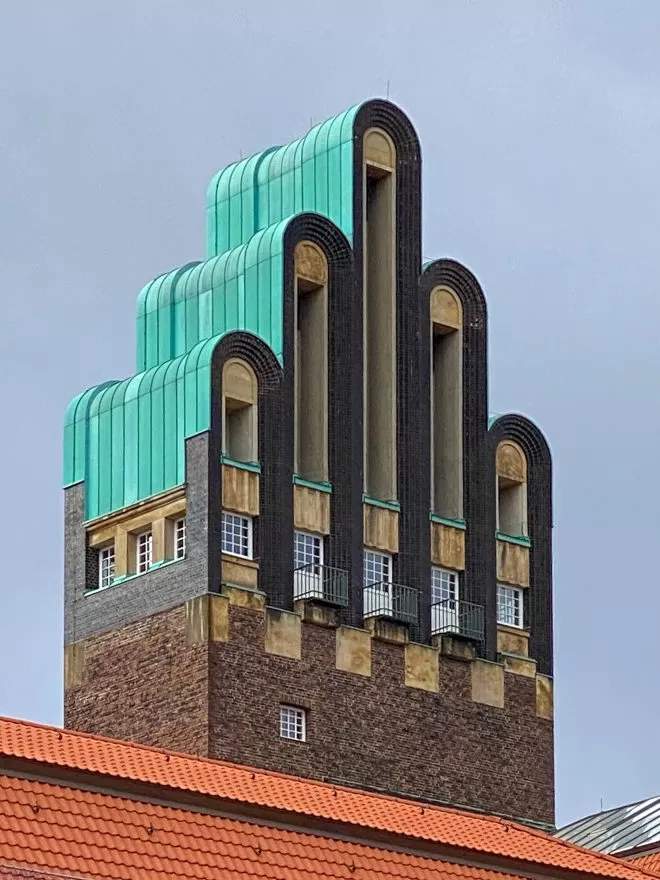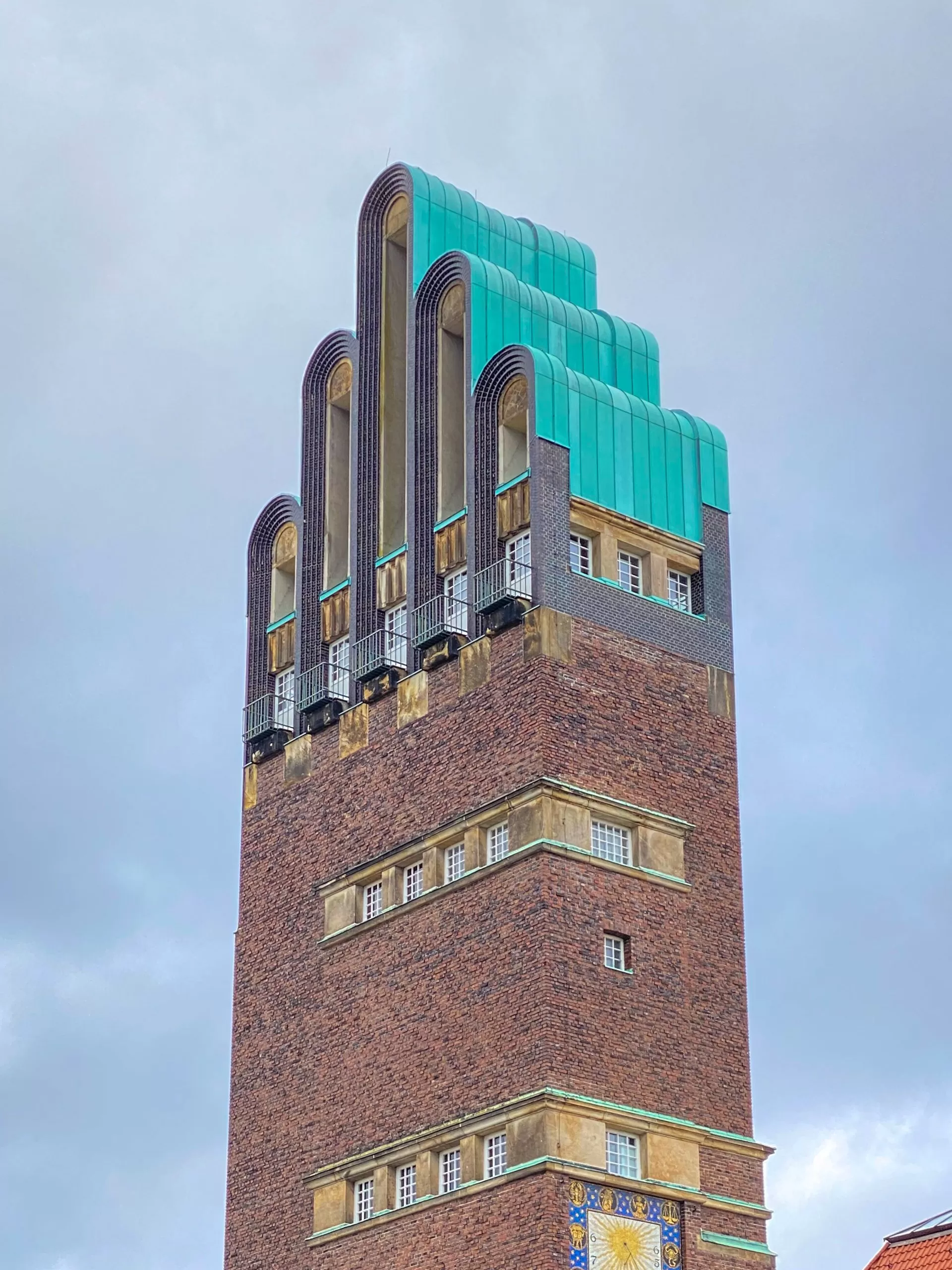
Hochzeitsturm, 1905-1908. Architect: Joseph Maria Olbrich. Photo: Daniela Christmann
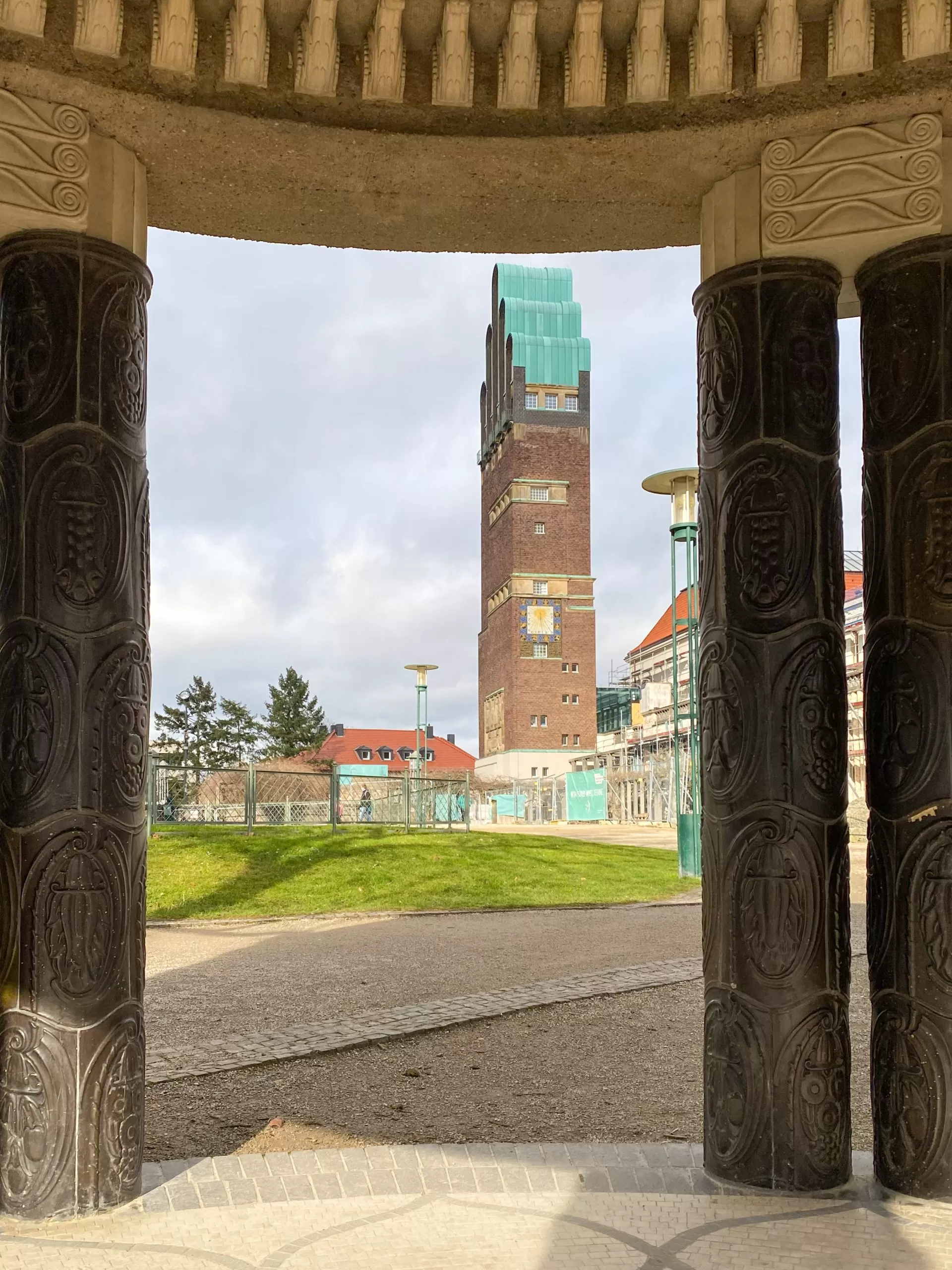
Hochzeitsturm, 1905-1908. Architect: Joseph Maria Olbrich. Photo: Daniela Christmann
1905 – 1908
Architect: Joseph Maria Olbrich
Olbrichweg 13, Darmstadt
Completed in 1908, Joseph Maria Olbrich designed the Hochzeitsturm (Wedding Tower) with its hood reminiscent of an outstretched hand on behalf of the city of Darmstadt to commemorate the marriage of Grand Duke Ernst Ludwig to Princess Eleonore zu Solms-Hohensolms-Lich on February 2, 1905.
Mathildenhöhe
With a height of 48, 5 meters it towers above the artists’ colony Mathildenhöhe in Darmstadt, the ensemble of which has been recognized as a UNESCO World Heritage Site since July 2021.
The tower is stylistically assigned to Art Nouveau and is part of the complex of the water reservoir, the exhibition hall and the community studios of the Darmstadt artists’ colony.
The cornered window bands of the tower, its emphasis on materials and its idiosyncratic design already seem to anticipate the development of architecture in the years to come.
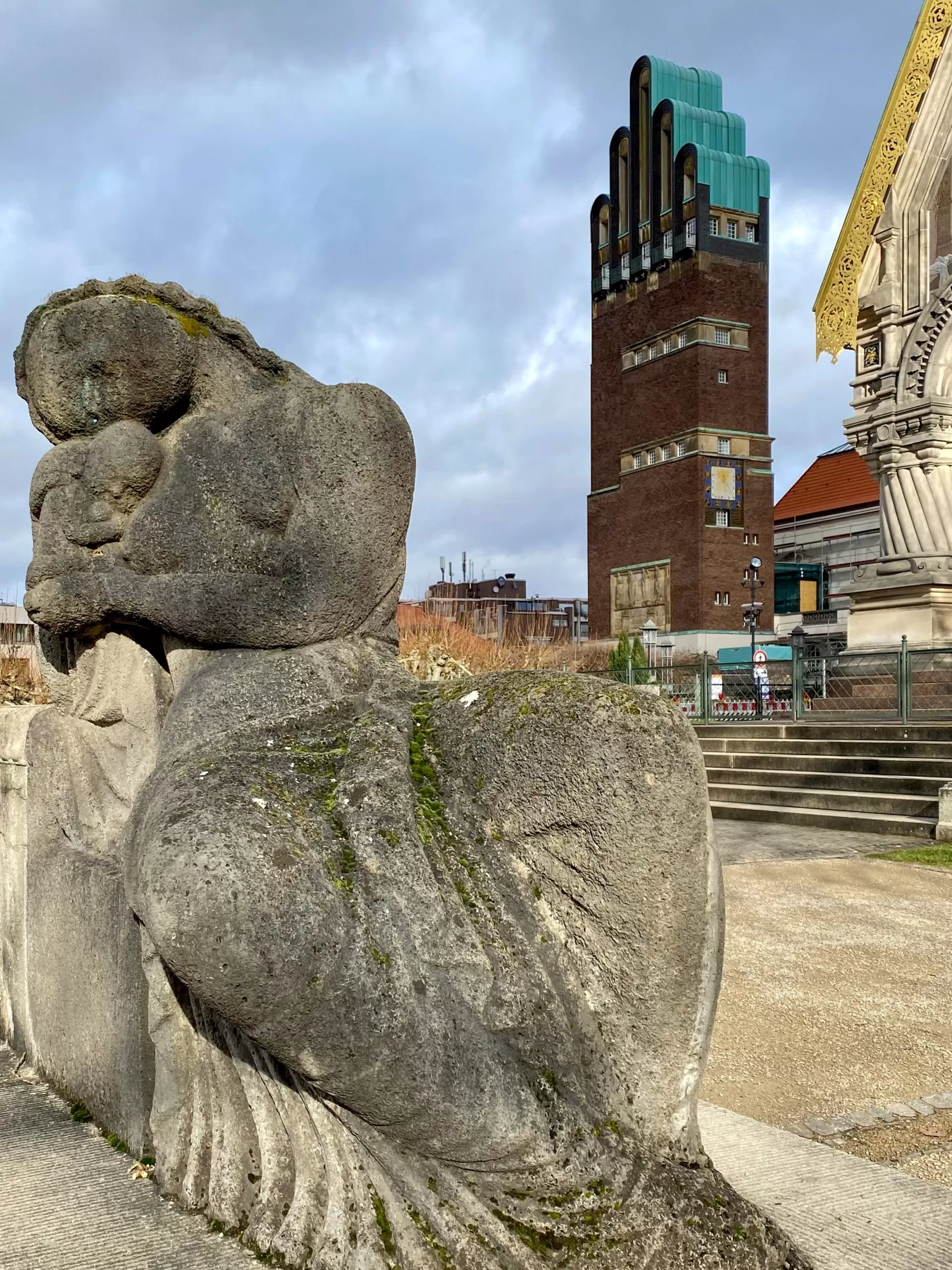
Hochzeitsturm, 1905-1908. Architect: Joseph Maria Olbrich. Photo: Daniela Christmann
Exhibition Space
The building, rendered in light gray, was originally opened as a space for art, where members of the artists’ colony could exhibit their work.
With its asymmetrical structure and orientation to the west, the building stands on the vaults of a closed water reservoir from 1880 for Darmstadt’s water supply, originally covered only with earth.
Tower and Inscription
The masonry tower body made of peat fire bricks rises above a plastered base with an entrance portal.
Above the entrance is a sandstone slab with four figures personifying the ruler virtues of strength, wisdom, justice and clemency. Below the figures are the coats of arms of the noble houses of the bride and groom.
An inscription on the relief, based on a design by Heinrich Jobst, reads: In memory of the marriage of Grand Duke Ernst Ludwig and Grand Duchess Eleonore erected by the city of Darmstadt anno 1907-1908.
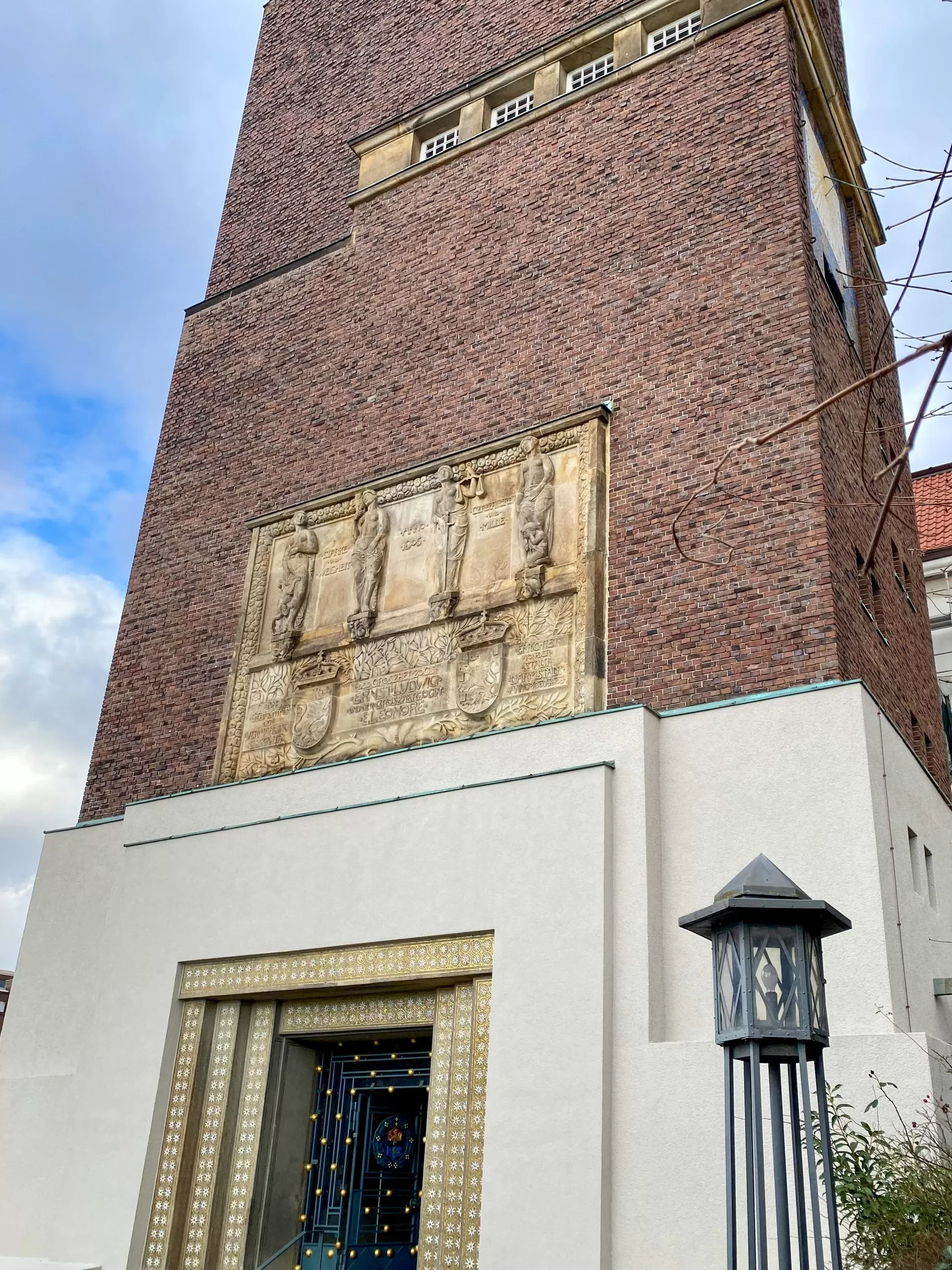
Hochzeitsturm, 1905-1908. Architect: Joseph Maria Olbrich. Photo: Daniela Christmann
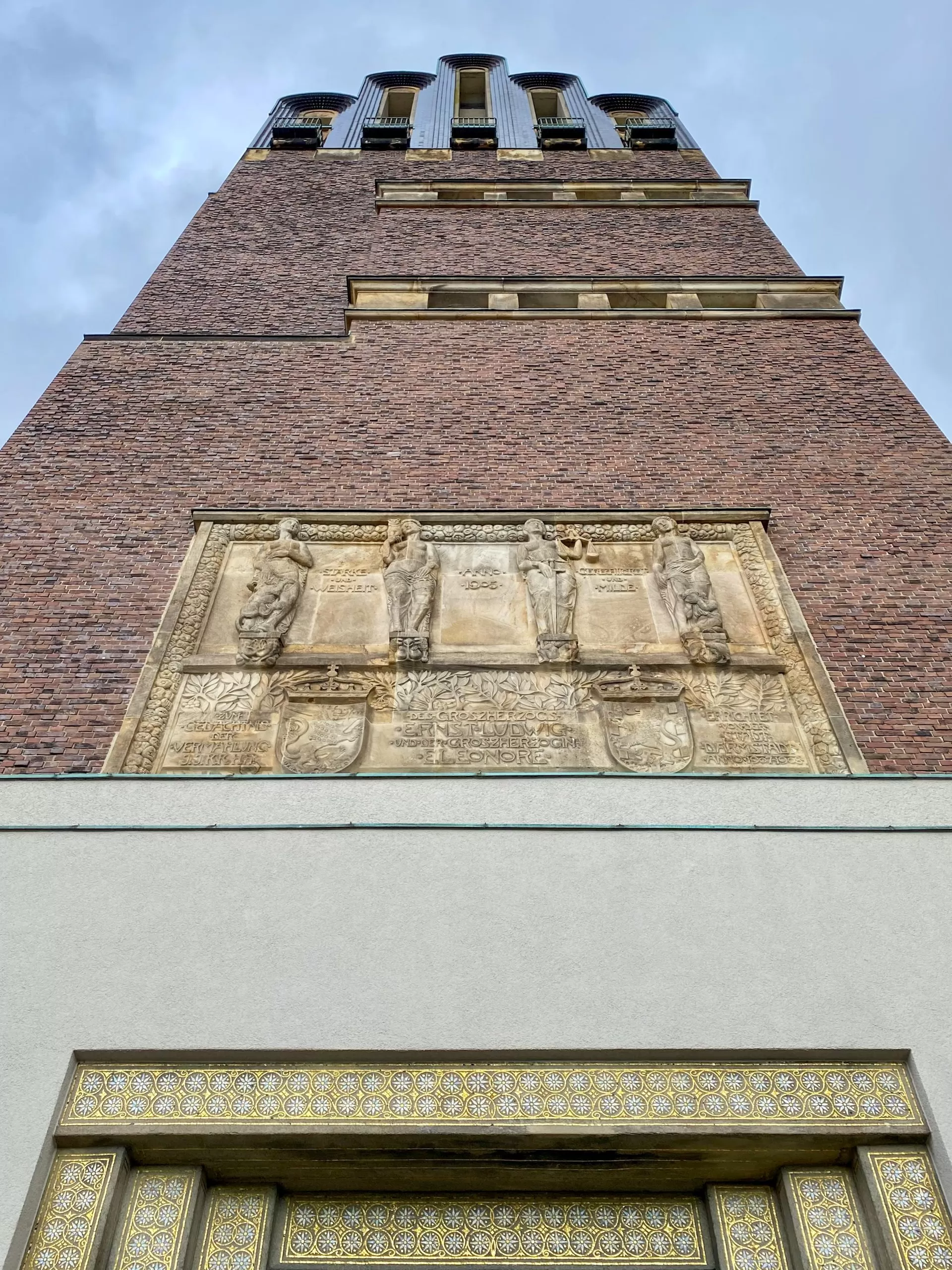
Hochzeitsturm, 1905-1908. Architect: Joseph Maria Olbrich. Photo: Daniela Christmann
Sundial
A sundial (1914) by Friedrich Wilhelm Kleukens adorns the south side, and a tower clock (1914) by Albin Müller decorates the north side.
On the south side, the sundial was executed by the Vereinigte Werkstätten für Mosaik und Glasmalerei Puhl & Wagner of Gottfried Heinersdorff in Berlin-Neukölln.
It is framed by the 12 signs of the zodiac on a blue background. Below it, to the left and right of the mullion window, are the first and last stanzas of a poem by Rudolf G. Binding:
The day passes over my face, the night it gropes quietly past and day and night a balance. And night and day a monotony and eternally circles the shadow writing lifelong. You stand in the dark game until the game’s interpretation hits you. Time is up – you have reached your goal.
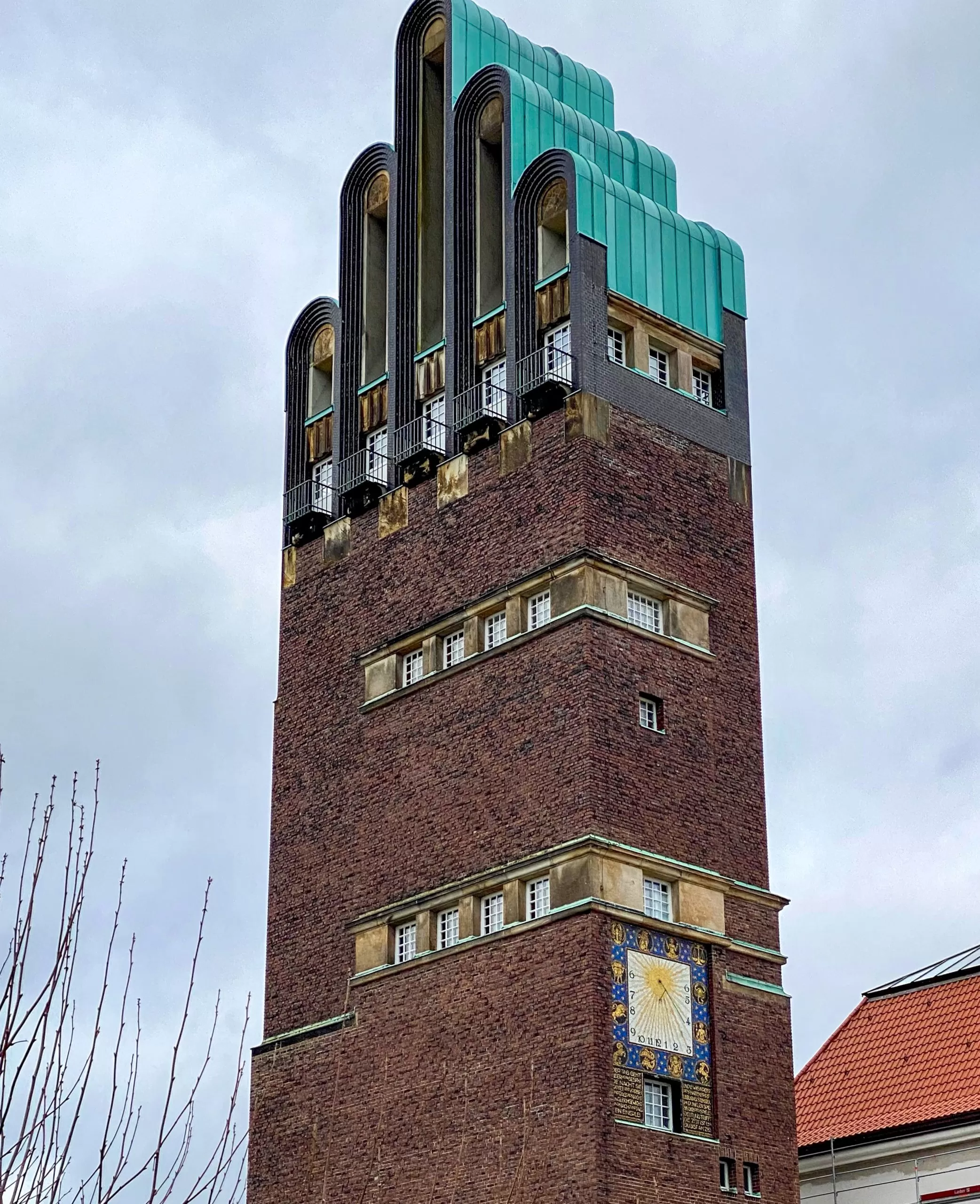
Hochzeitsturm, 1905-1908. Architect: Joseph Maria Olbrich. Photo: Daniela Christmann
Tower Clock
On the north side, at the level of the 6th floor, a mechanical tower clock in gold leaf was inserted in 1914.
According to a design by Albin Müller, two golden torches on the sides and three ornamental round arches below, enclosing a cross, a flaming heart and an anchor, the symbols of faith, love and hope, enclose the dial on a square field.
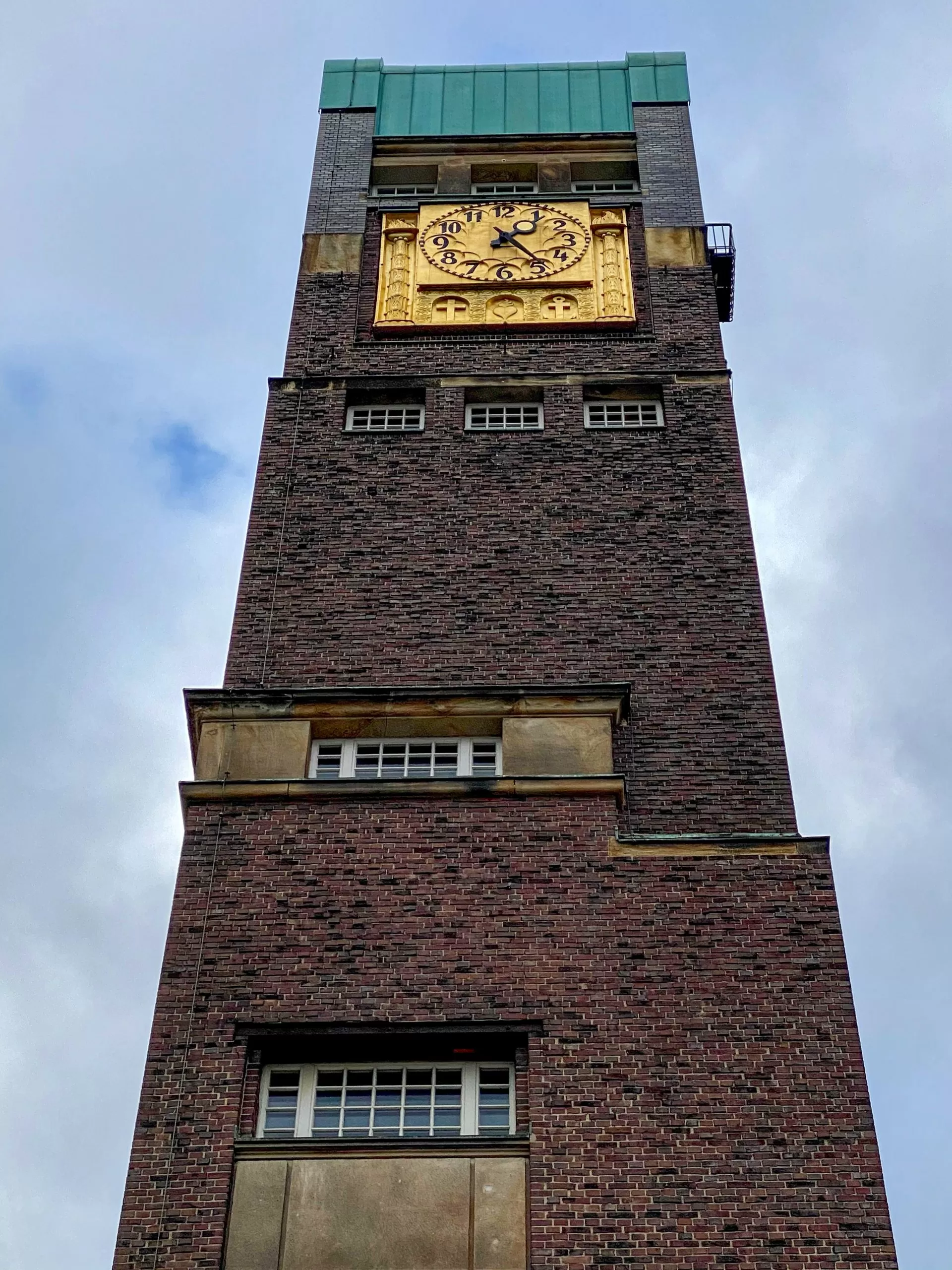
Hochzeitsturm, 1905-1908. Architect: Joseph Maria Olbrich. Photo: Daniela Christmann
Entrance Hall
Two wall mosaics by Friedrich Wilhelm Kleukens with the titles The Kiss and Fortuna are located in the entrance hall.
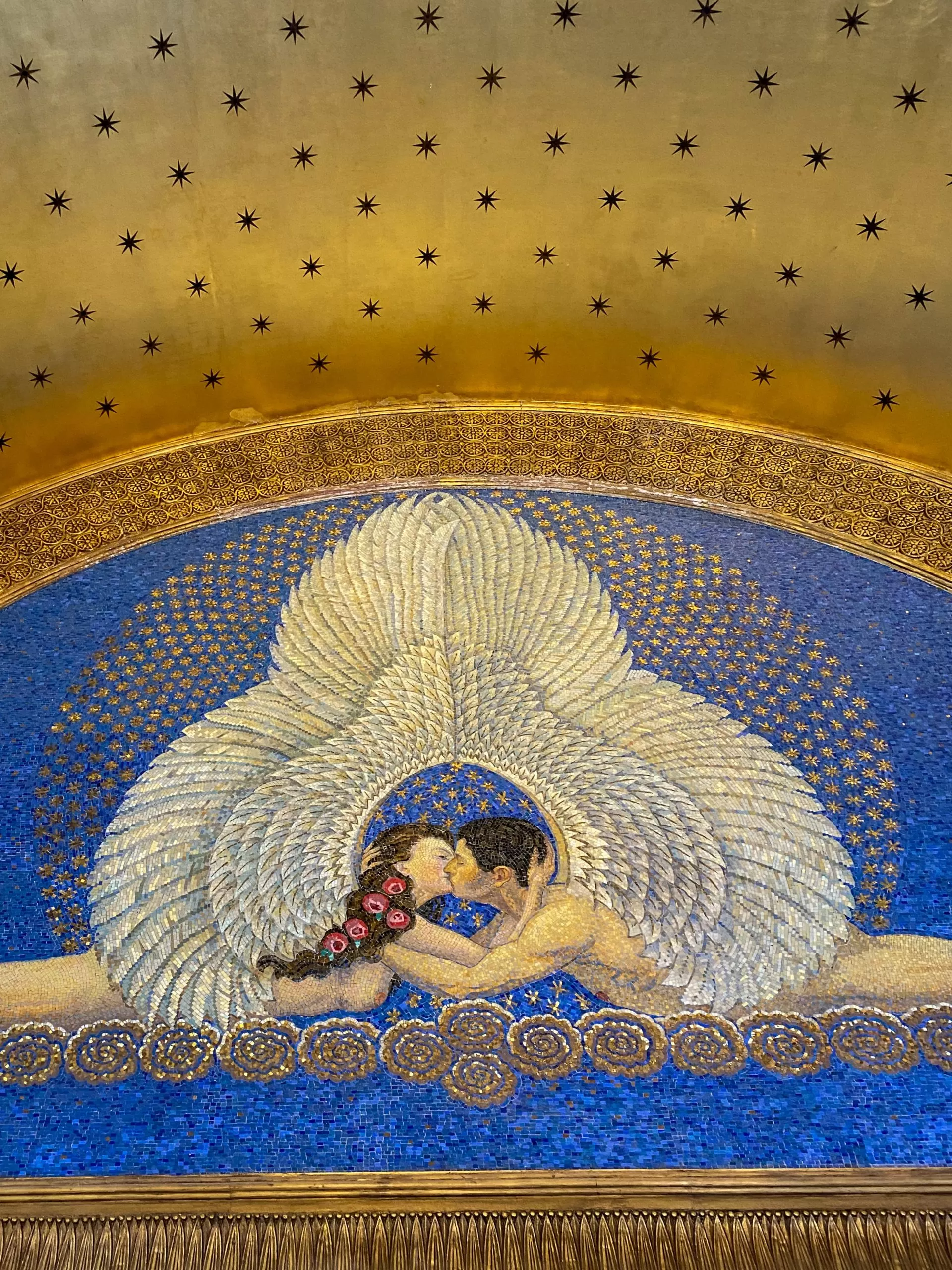
Hochzeitsturm, 1905-1908. Architect: Joseph Maria Olbrich. Photo: Daniela Christmann
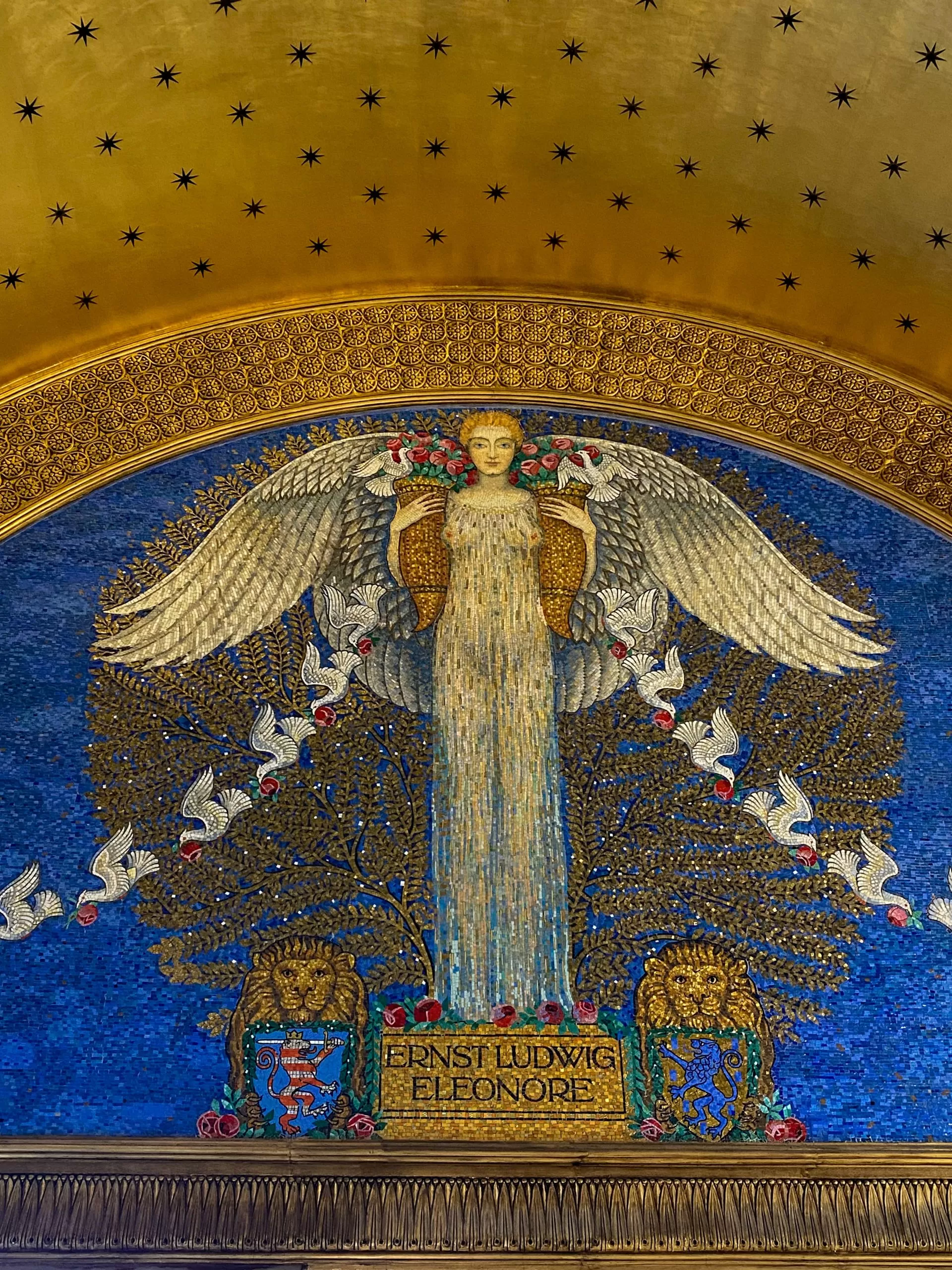
Hochzeitsturm, 1905-1908. Architect: Joseph Maria Olbrich. Photo: Daniela Christmann
Room of the Grand Duke
Spanned by a barrel vault, the Grand Duke’s Room on the fifth floor of the tower is about seven meters high.
Fritz Hegenbart painted it with a deep blue ground and an ornament of lizards and snail shells.
On the front side there is a depiction of a young woman on a mythical creature, which embodies the forward-rushing modern age.
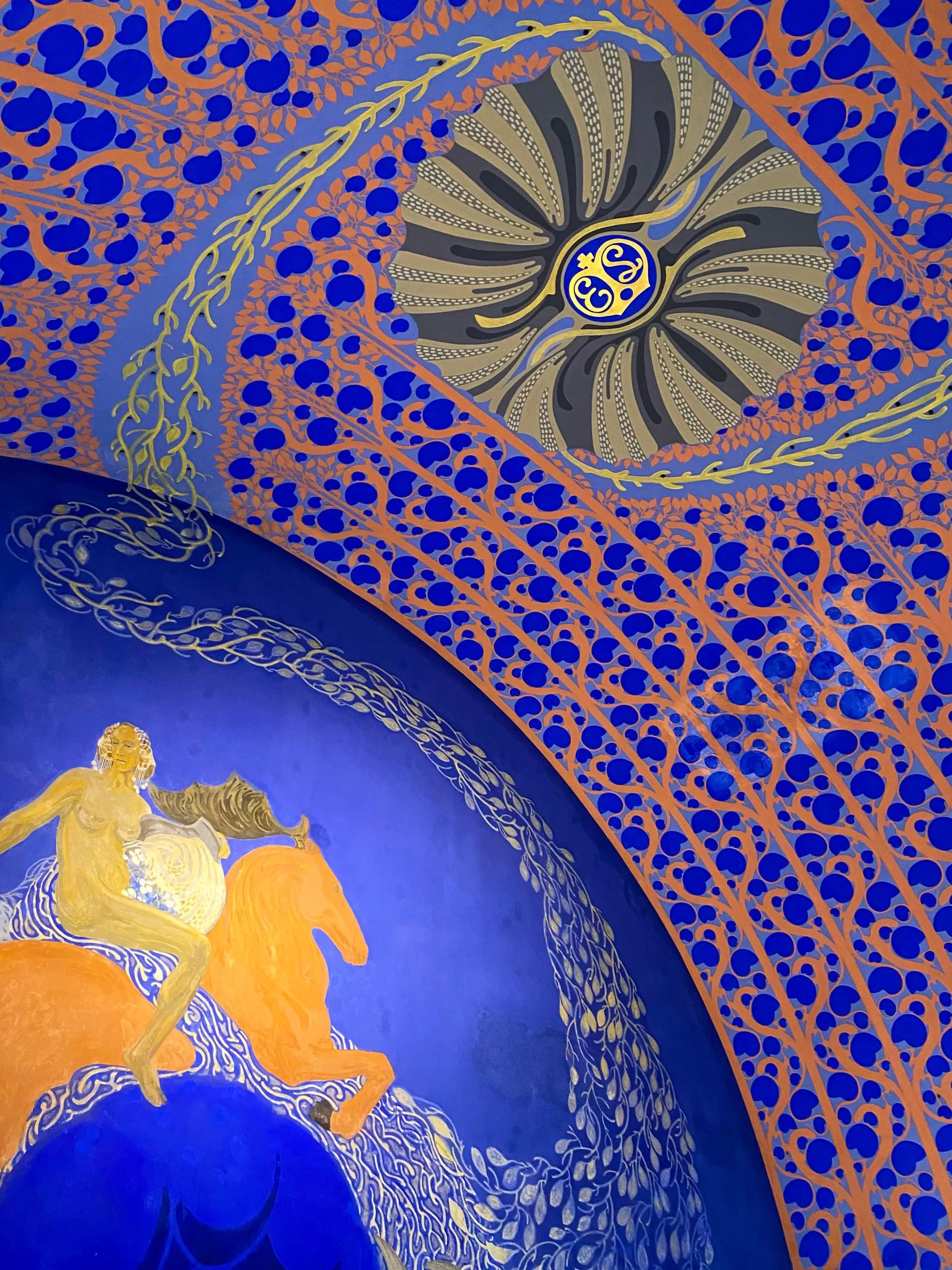
Hochzeitsturm, 1905-1908. Architect: Joseph Maria Olbrich. Photo: Daniela Christmann
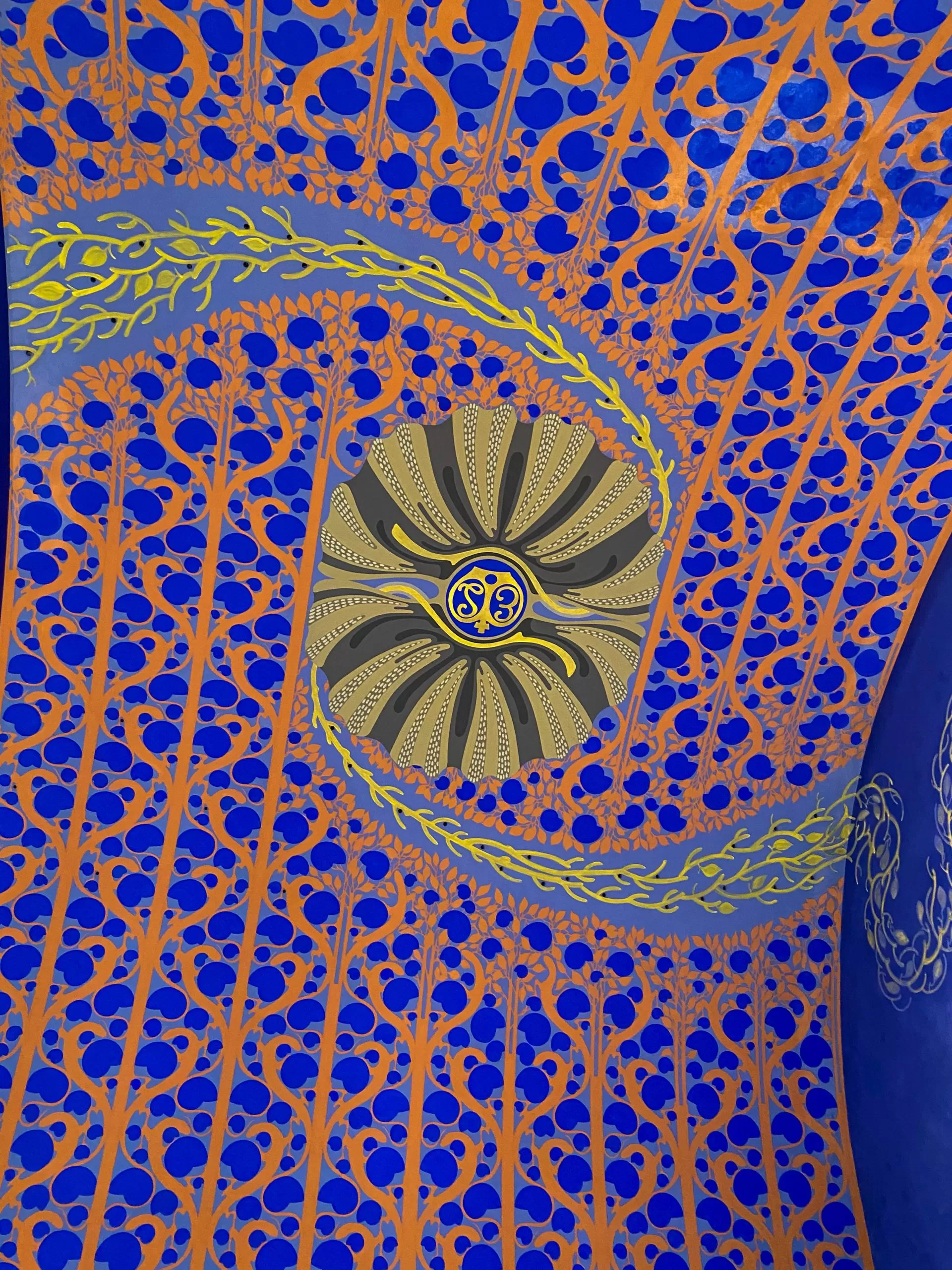
Hochzeitsturm, 1905-1908. Architect: Joseph Maria Olbrich. Photo: Daniela Christmann
Room of the Grand Duchess
The Grand Duchess’s room on the fifth floor is almost five meters high and has a coffered and gilded stucco ceiling. Above the surrounding paneling, Darmstadt artist Philipp Otto Schäfer painted a broad wall frieze depicting a wedding feast.
On three walls the wedding procession is depicted and on the front wall in the north the bridal couple under a canopy.
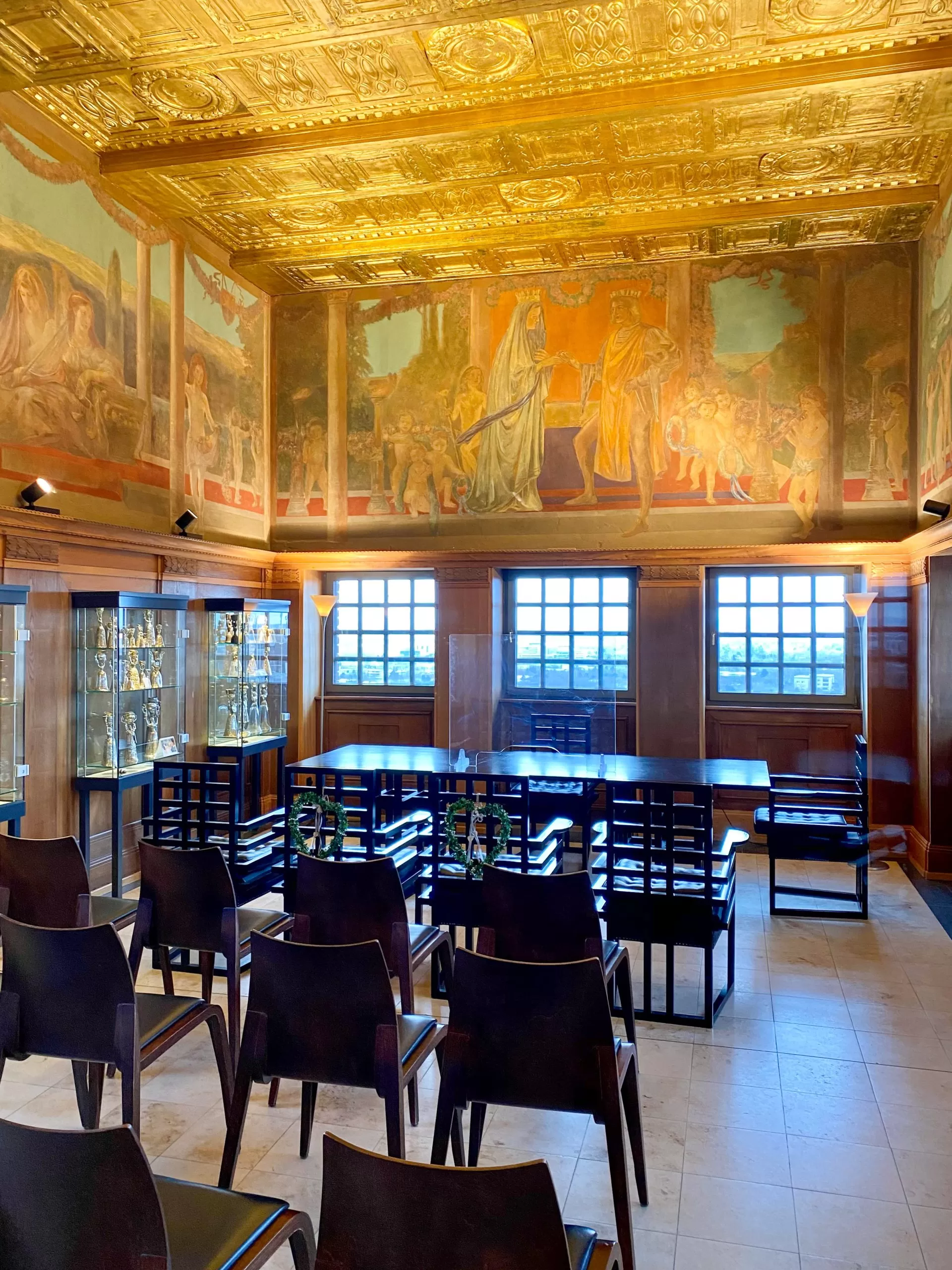
Hochzeitsturm, 1905-1908. Architect: Joseph Maria Olbrich. Photo: Daniela Christmann
Crown of the Tower
Five equal-width pinnacles of three heights in symmetrical, wedge-shaped staggering form the crown of the tower. Roof surfaces and sides are covered with copper sheet.
The broadside of the rectangular tower merges into the five-lobed facade of the gable. Bands of dark red brick divide the faces of the five fingers, which rise to form round arches.
The bricks are masoned with their narrow side as the visible side and recessed inward several times in simple strips.
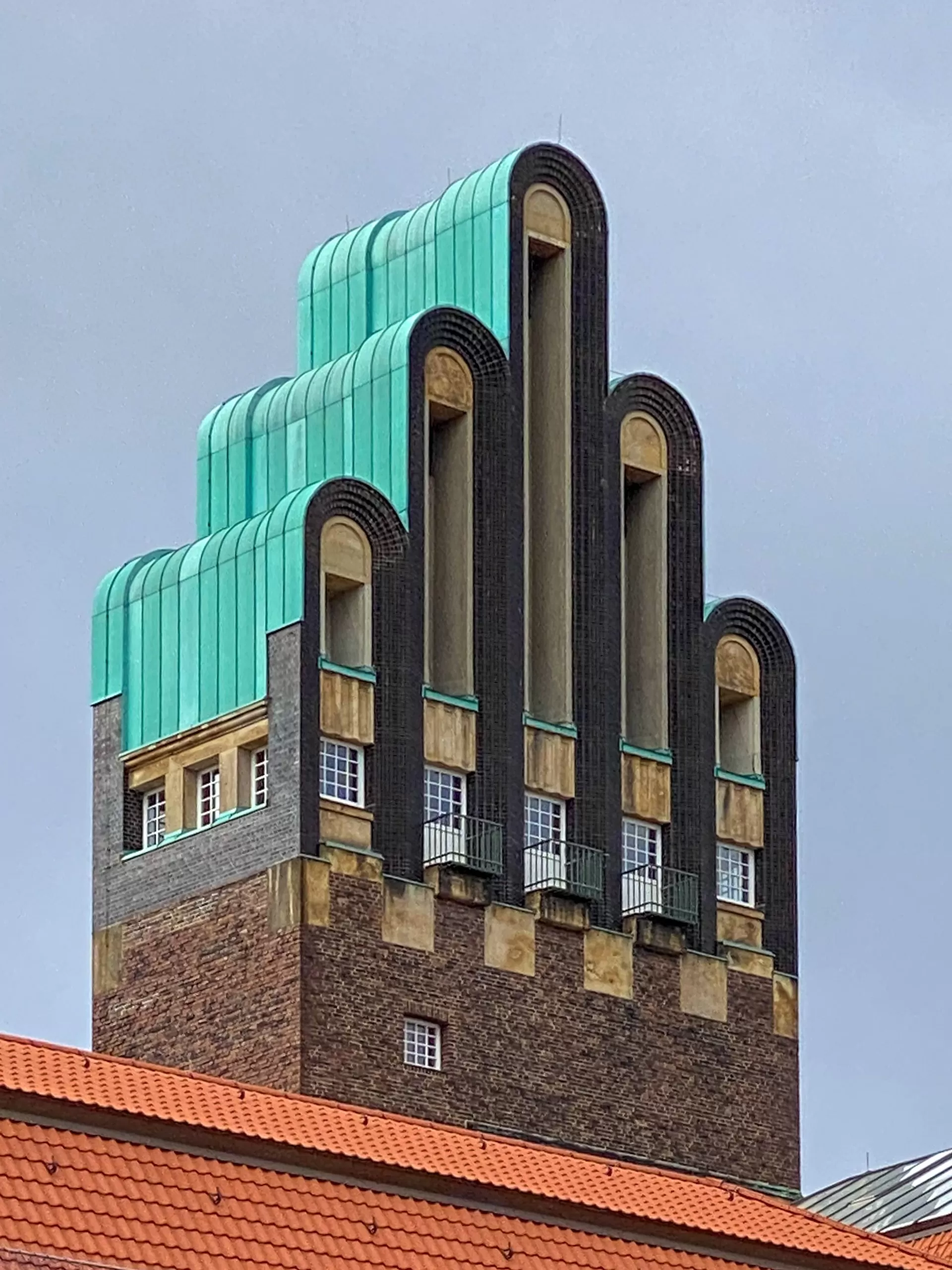
Hochzeitsturm, 1905-1908. Architect: Joseph Maria Olbrich. Photo: Daniela Christmann
Observation Deck
The observation deck is located at a height of about 33.5 meters.
It can be reached via the staircase with 195 steps in 13 spirals. The narrow sides on the north and south have three mullioned windows each. Windows on the east and west sides are set in doors that lead to small balconies in front.
Renovation and Restoration
During the catastrophic bombing of Darmstadt on September 11, 1944, in which more than half of the city was destroyed, the Wedding Tower also suffered severe damage and burned out.
For years, rainwater was able to penetrate the interior of the tower and caused considerable damage.
It was not until the early 1950s that the steel structure at the top of the tower and the copper plate of the fingers were renewed.
The rooms of the wedding tower were successively renovated between 1980 and 2002. In 2010 to 2012, the renovation of the facade took place.
In 2021, the historic WC facility at the forecourt on the west side of the Wedding Tower, which had been completed in 1908 at the same time as the exhibition buildings, was renovated in accordance with the preservation order.
Current Use
Nowadays the tower serves as a lookout tower and branch office of the Darmstadt registry office.

